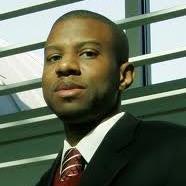 Dr. Ivory Toldson, deputy director of the White House Initiative on HBCUs, said aspiring faculty “should work to find an institution where you will feel at home.”
Dr. Ivory Toldson, deputy director of the White House Initiative on HBCUs, said aspiring faculty “should work to find an institution where you will feel at home.”WASHINGTON — Colleges and universities looking for advice on best practices for recruiting and retaining faculty of color, got candid advice here Thursday from three Black scholars offering tips based on their own experiences navigating the academy.
In the blunt, oft times humorous exchanges with colleagues from across the country gathered for the annual meeting of the Association of American Colleges and Universities, the scholars cordially disagreed on some strategic advice for their peers.
By the same token they were in agreement in their advice that institutions need to look and be receptive to faculty prospects who are not cookie cutter versions of existing faculty, that recruiting needs to be sincere not just hiring done to fill a quota and leaders of an institution should work at ensuring the college or university has a cultural landscape and environment that is understanding and receptive to the ordinary needs of faculty of color.
“All colleges look at everybody the same…,” said Dr. Ivory Toldson, deputy director of the White House Initiative on Historically Black Colleges and Universities (HBCUs), responding to a question about the “biggest” mistake colleges make in trying to recruit Black faculty. “They (the faculty recruiters) may miss certain things, a lot of those holistic factors. You have to be a lot broader in your scope.”
Purdue University’s Dr. Monica F. Cox, an associate professor of engineering education, amplified Toldson’s advice, telling the diverse audience, “Folks have to realize this person’s (the prospect’s) past may be different from what you experienced before.”
Cox, a Spelman College graduate with graduate degrees from the University of Alabama and Vanderbilt University’s Peabody College, said faculty recruiters need to educate themselves about prospects, adding later in the discussion, successful recruiting is more than “words on paper. It’s a relationship, showing interest,” she said, likening recruiting to a courtship.
Cox offered Purdue’s successful courtship of her to work there as an example of what institutions must do to recruit people of color. “If they were faking it, they were doing an excellent job,” she said, sparking an outburst of laughter in the audience.
When it came to the topic of getting promotions and tenure, the advice varied.
“Do what it takes to get your tenure,” said Dr. Ben Vinson, dean of the College of Arts and Sciences at The George Washington University here.
Vinson, who came to George Washington nearly a year ago from The Johns Hopkins University in nearby Baltimore, said getting tenure is important in the life of a scholar and aspirants should sacrifice the time and effort needed to reach that goal.
Toldson differed politely with Vinson, saying aspiring faculty “should work to find an institution where you will feel at home.” He said “a non-diverse faculty finds themselves to be a model,” that is the case, adding such a climate makes it tough for a minority faculty member to feel welcomed and their work and interests appreciated. “There’s a very depressing and lonely feeling,” he said, of being the only person of color on a team.
“We’re all contributing to scholarship,” said Toldson, explaining that because the interests and focus of a minority may be different from the faculty for which he or she is being considered, it is of no less value than more widely known and acknowledged scholarship.
“It’s not just about doing what it takes,” said Toldson, challenging Vinson’s opinion, “but the department doing what it takes to attract different kinds of talent.”
The three scholars sounded in sync in response to an audience question seeking advice for institutions in small communities.
Each scholar noted they had gotten part of their education and or spent time working at an institution outside a big city.
Based on their experiences they assured the small community peers scholars of color can be recruited, as long as there is a genuine effort by department and institution leaders to understand what faculty of color need then work to help achieve and promote that kind of culture and environment on and beyond campus.
The needs could be as candid as where to find a good beautician, said Cox in a humorously serious context, to knowing where faculty of color can find programs and organizations in which they may have an interest, said Vinson, one of the Penn State graduates.
“That community work can’t be the responsibility of those scholars,” Vinson admonished the audience. “It needs to be done not by those in the ranks, but above the ranks,” he said, echoing his peers.
On the topic of retention, Vinson reiterated his peers in stressing an institution’s cultural “environment and climate are critical.” He said there are things that can be done structurally within an institution to achieve those objectives, including building diverse leadership capacity, having a steady supply of diverse graduate students and supporting program ideas that can help diversity.
The scholars cautioned reliance on student evaluations of faculty of color, noting student evaluations can be used as part of an assessment but should not become the sole tool for assessing a faculty member.
Coming from a different learning model can cause a student to downgrade a faculty member. Sometimes a foreign born and raised faculty member’s speech pattern could cause a downgrade because English is the teacher’s second language. Such impressions could make a diverse faculty member feel unwelcomed, they said.
The talk on recruiting and retaining diverse faculty of color was sponsored by Diverse: Issues In Higher Education and moderated by the magazine’s co-founder, Frank Matthews.


















